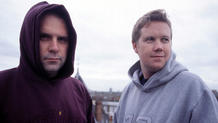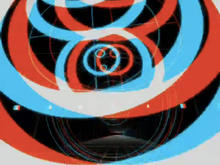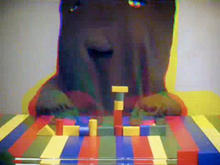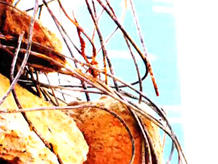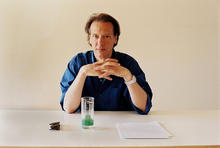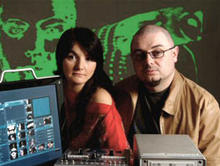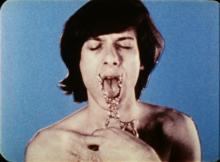Coldcut: Natural Rhythm
(1997)by Hexstatic (Stuart Warren Hill and Robin Brunson) featured insects, birds and other wildlife as well as a tribesman playing a flute like instrument.
Prior to meeting Robin at the Five launch party in 1997, Stuart Warren Hill had begun working on the Natural Rhythms Trilogy, a collaborative effort with Coldcut and Greenpeace. Stuart approached Greenpeace asking for use of their stock footage of wildlife and logging operations and in return Greenpeace could use the finished project in their campaigns and presentations.
The first video was 1997's Frog Jam, which created a rhythmic structure out of short clips of water dripping, frog leaping and tribal drumming and chanting. This was soon followed by Natural Rhythm and Timber.
Each video employed increasingly more complex mixing and splicing techniques culminating with the award winning Timber. Its tone is more plaintively political, opening with majestic images of the sunset over a forest of immensely beautiful trees then quickly shifting with a clap of thunder to a telegraph button punching out the dots and dashes of a Morse code SOS distress call. Images of powerful circular saws, chopping axes, and huge, buzzing chainsaws soon follow. The picture then distorts and images of the indigenous animals appear to the singing of a mournful native woman. The anti-deforestation message is quite clear even before the industrial machinery makes its appearance towards the end of the track. Timber won the award for Best Editing Video Musique in France in 1998 and appeared on Coldcut’s 1997 release Let Us Play!.
Source: Wikipedia
Natural Rhythm is the second part of the Natural Rhythms Trilogy, Stuart Warren-Hill's first experiment in video sampling, the first piece being Frog Jam and the third being the critically acclaimed A/V single Timber, which won the MCM Atlas [French national TV] Award for Best Video Editing (1998). Although Stuart was the main architect of this trilogy, it was created with the support of Coldcut and Greenpeace.
Source: Hexstatic


